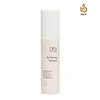What's inside
What's inside
 Key Ingredients
Key Ingredients

 Benefits
Benefits

 Concerns
Concerns

 Ingredients Side-by-side
Ingredients Side-by-side

Water
Skin ConditioningMelaleuca Alternifolia Leaf Oil
AntioxidantLavandula Angustifolia Oil
MaskingCarbomer
Emulsion StabilisingGlycine Soja Protein
EmulsifyingRehmannia Chinensis Root Extract
Skin ConditioningLactobacillus/Pear Juice Ferment Filtrate
Skin ConditioningSalix Alba Bark Extract
AstringentPhellodendron Amurense Bark Extract
Skin ConditioningHouttuynia Cordata Extract
Skin ConditioningMelia Azadirachta Leaf Extract
Skin ConditioningScutellaria Baicalensis Root Extract
AstringentButylene Glycol
HumectantPhenoxyethanol
PreservativeEthylhexylglycerin
Skin ConditioningTriethanolamine
BufferingWater, Melaleuca Alternifolia Leaf Oil, Lavandula Angustifolia Oil, Carbomer, Glycine Soja Protein, Rehmannia Chinensis Root Extract, Lactobacillus/Pear Juice Ferment Filtrate, Salix Alba Bark Extract, Phellodendron Amurense Bark Extract, Houttuynia Cordata Extract, Melia Azadirachta Leaf Extract, Scutellaria Baicalensis Root Extract, Butylene Glycol, Phenoxyethanol, Ethylhexylglycerin, Triethanolamine
Water
Skin ConditioningButylene Glycol
HumectantCastanea Crenata Shell Extract
Skin ConditioningPEG-60 Hydrogenated Castor Oil
EmulsifyingCinnamomum Cassia Bark
Skin ConditioningAnthemis Nobilis Flower Extract
MaskingRhus Semialata Gall Extract
Skin ConditioningCaprylyl Glycol
EmollientCarbomer
Emulsion StabilisingTriethanolamine
BufferingSalix Alba Bark Extract
Astringent1,2-Hexanediol
Skin ConditioningAllantoin
Skin ConditioningAmmonium Acryloyldimethyltaurate/Vp Copolymer
Camellia Sinensis Leaf Extract
AntimicrobialYeast Ferment Extract
Skin ConditioningEthylhexylglycerin
Skin ConditioningDipotassium Glycyrrhizate
HumectantMentha Haplocalix Extract
MaskingHamamelis Virginiana Leaf Extract
Skin ConditioningMenthyl Lactate
MaskingGlycerin
HumectantHydrolyzed Albumen
Skin ConditioningScutellaria Baicalensis Root Extract
AstringentBeta-Glucan
Skin ConditioningGlycine
BufferingGlutamic Acid
HumectantHistidine
HumectantLysine
Skin ConditioningProline
Skin ConditioningSerine
MaskingAlanine
MaskingArginine
MaskingAspartic Acid
MaskingLeucine
Skin ConditioningThreonine
Valine
MaskingParfum
MaskingPhenoxyethanol
PreservativeLimonene
PerfumingLinalool
PerfumingHexyl Cinnamal
PerfumingCitronellol
PerfumingWater, Butylene Glycol, Castanea Crenata Shell Extract, PEG-60 Hydrogenated Castor Oil, Cinnamomum Cassia Bark, Anthemis Nobilis Flower Extract, Rhus Semialata Gall Extract, Caprylyl Glycol, Carbomer, Triethanolamine, Salix Alba Bark Extract, 1,2-Hexanediol, Allantoin, Ammonium Acryloyldimethyltaurate/Vp Copolymer, Camellia Sinensis Leaf Extract, Yeast Ferment Extract, Ethylhexylglycerin, Dipotassium Glycyrrhizate, Mentha Haplocalix Extract, Hamamelis Virginiana Leaf Extract, Menthyl Lactate, Glycerin, Hydrolyzed Albumen, Scutellaria Baicalensis Root Extract, Beta-Glucan, Glycine, Glutamic Acid, Histidine, Lysine, Proline, Serine, Alanine, Arginine, Aspartic Acid, Leucine, Threonine, Valine, Parfum, Phenoxyethanol, Limonene, Linalool, Hexyl Cinnamal, Citronellol
Ingredients Explained
These ingredients are found in both products.
Ingredients higher up in an ingredient list are typically present in a larger amount.
Butylene Glycol (or BG) is used within cosmetic products for a few different reasons:
Overall, Butylene Glycol is a safe and well-rounded ingredient that works well with other ingredients.
Though this ingredient works well with most skin types, some people with sensitive skin may experience a reaction such as allergic rashes, closed comedones, or itchiness.
Learn more about Butylene GlycolCarbomer is a polymer of acrylic acid. Its main role is to create a gel consistency.
A high amount of carbomer can cause pilling or balling up of products. Don't worry, most products contain 1% or less of carbomer.
Ethylhexylglycerin (we can't pronounce this either) is commonly used as a preservative and skin softener. It is derived from glyceryl.
You might see Ethylhexylglycerin often paired with other preservatives such as phenoxyethanol. Ethylhexylglycerin has been found to increase the effectiveness of these other preservatives.
Phenoxyethanol is a preservative that has germicide, antimicrobial, and aromatic properties. Studies show that phenoxyethanol can prevent microbial growth. By itself, it has a scent that is similar to that of a rose.
It's often used in formulations along with Caprylyl Glycol to preserve the shelf life of products.
Salix Alba Bark Extract comes from the white willow tree, which is native to Europe and Central Asia.
Salix Alba Bark Extract has often been described as salicylic acid's cousin. This is due to the salicin it contains. However, studies are limited showing salix alba bark to be an effective salicylic acid alternative.
Salicin does have anti-inflammatory and antioxidant properties. It has shown to decrease the formation of inflammatory mediators, such as tumor necrosis factor-α and nuclear factor-kappa B. Salicin also has a mildly exfoliating effect on the skin.
Several other components in salix alba bark extract also contain antioxidant properties, such as flavonoids and polyphenols. Antioxidants may help with anti-aging as they neutralize harmful free-radical molecules.
Willow Bark extract has been used for thousands of years. Ancient civilizations used white willow to help treat pain and fevers.
Learn more about Salix Alba Bark ExtractScutellaria Baicalensis Root Extract comes from the Baikal skullcap or Chinese skullcap plant. This plant is native to Northeast Asia and can be found in China, Mongolia, Korea, and Siberia.
In cosmetics, Scutellaria Baicalensis Root Extract provides antioxidant and anti-inflammatory benefits. This is due to the flavonoid composition of Scutellaria Baicalensis Root Extract.
In Chinese traditional folk medicine, Scutellaria Baicalensis Root Extract is used to help treat lung issues and hypertension.
Learn more about Scutellaria Baicalensis Root ExtractTriethanolamine is an emulsifier and pH adjuster. It is created using ethylene oxide and ammonia. This gives Triethanolamine a nitrogen core and a similar scent to ammonia.
As an emulsifier, it prevents ingredients from separating and enhances texture by adding volume to a product.
PH adjusters are common in cosmetic products. The pH of a product can affect the effectiveness of other ingredients. A product with a high pH may also irritate the skin.
Learn more about TriethanolamineWater. It's the most common cosmetic ingredient of all. You'll usually see it at the top of ingredient lists, meaning that it makes up the largest part of the product.
So why is it so popular? Water most often acts as a solvent - this means that it helps dissolve other ingredients into the formulation.
You'll also recognize water as that liquid we all need to stay alive. If you see this, drink a glass of water. Stay hydrated!
Learn more about Water